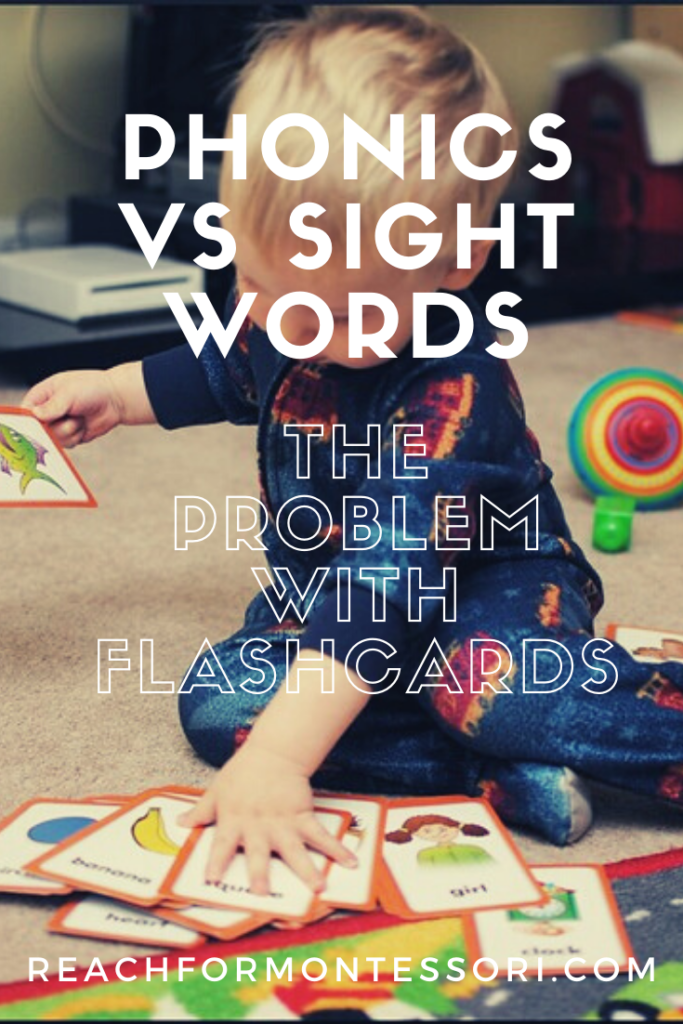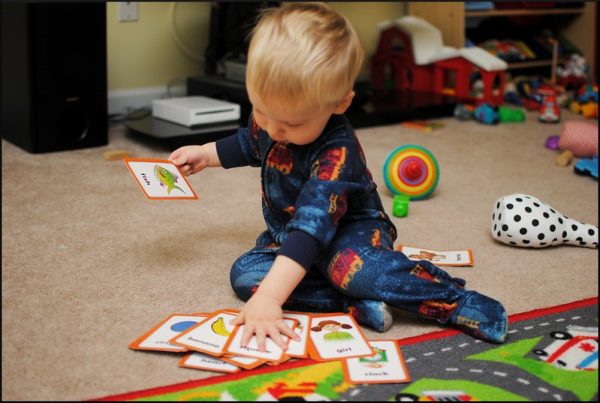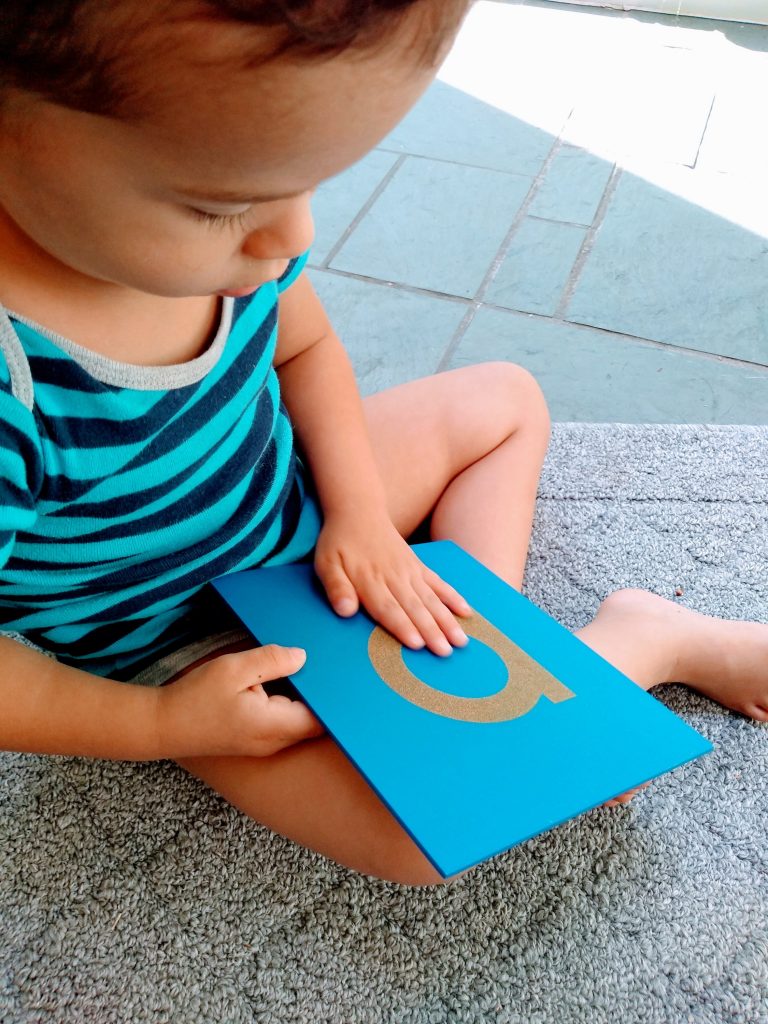It's an exciting time for a parent, when their child begins to show an interest in learning words. This is the time when many parents hop online to order massive stacks of flashcards with the hopes of giving their child a leg up on the reading ladder.
Is this the right thing to do, though? When comparing sight words vs phonics, where do flashcards fit into the equation and what's the problem with flashcards?

What are phonics?
“The child who has not heard the word pronounced, and who recognizes it when he sees the word composed…and who can tell what it means; this child reads.” -Maria Montessori, The Montessori Method
Phonics are letter-sound relationships. Each letter in the alphabet is assigned a phonetic value, or a certain sound to accompany the written symbol.
For example, the letter B's phonetic sound is “buh”.
Phonics is an important first step to reading because it is needed to decode words. The ability to decode words through phonics not only helps with reading fluency and comprehension, but it is important for spelling, as well.
Sound games are a great introduction to phonics. Phenomic awareness, as with sound games, is promoted orally, prior to the introduction of written letters.
This is something you can weave throughout the day even with a very young toddler. Being familiar that words are made up of individual sounds (phenomic awareness) is a crucial element to literacy.
Without this awareness, phonics instruction will not make sense to your child when introduced. Many children enter the preschool years having only memorized the alphabet song, but having never been introduced to the phonetic alphabet or engaged in phenomic games.
Following sound games that are often introduced in the toddler years, piecing together written letters with their phonetic sounds should follow.
Below is a great example of how to present phonics to your child. Mumma Studio uses a very fun phonics puzzle, however you can use letters from you Sandpaper Letter set or (my favorite) the Small Movable Alphabet.
What are sight words?
Strong readers utilize multiple strategies when reading, instead of relying on just one. This is important because phonics will only take you so far.
Many words do not have a phonetic spelling. This is where sight words become important.
Sight words actually make up around 75% of the words printed in children's literature!
Sight words are a part of every reading program that teaches the English language. Whether a program or school uses Fry's sight words or it's a Montessori school using the Pink/Blue/Green words, sight words are important.
Just like phonics, sight words promote reading confidence and comprehension. Becoming familiar with the sight words recommended for the child's individual reading level is also critical for helping them derive the meaning of new word within a given text.
It is sometimes helpful to have a photo accompany a sight word, but it is not a necessity. In Montessori environments, small objects are sometimes used, as well. (Small objects are also used in Montessori to promote phenomic awareness.)
For instructions on how to present sight words with 3-part card sets, also called nomenclature cards, click here.

Sight words vs phonics: the problem with flashcards
While sight words are important for learning to read, traditional flashcards are not the same thing and do not serve as great a purpose. They can even get in the way when trying to help your child form a solid literacy foundation.
Flashcard manufacturers make some enticing promises to sell their products. In addition to overloading your child's brain with stimuli, flashcards alone do not promote well rounded literacy skills.
We'll take the word “red” as an example. It is a standard CVC (consonant/vowel/consonant) word.
Introducing the written word “red” with phonics lessons allows a child to become familiar with the individual sound of each letter. This is an important step to being able to read on their own, as each letter sound can be applied to thousands of other words.
When words that follow a CVC pattern are introduced through flashcards, a child is simply memorizing the shapes involved in the letters/words. This poses a problem when learning to read, as the child's brain has become accustom to recognizing words by their shapes, not the phonetic sounds of the letters that compose them.
You would likewise not introduce a word like “red” as a sight word. A simple CVC word like this should be learned following the steps of: phonemic awareness, tactile work with the letters, then practice with 3-part cards or simple books, such as Bob Books. (affiliate link)
This is not to say that traditional flash cards, like the ones featured in the section above's photo, can't have their place in a budding reader's repertoire. With a solid phonetic foundation, flash cards can suffice in the stead of nomenclature cards, if you do not have the interest (or ability) to make them, for practice.
While flashcards, when used as a sole method for introducing reading in a formal way, are not ideal, they may have a place for some family's in the sight word vs phonics debate.
Whether you are aiding your child in writing first or the other way around, it is important to know where both phonics and sight words fit into literacy development. This will help you understand why traditional flashcards might not be the best for children.
Do you use a combination of phonics and sight words with your little one? Did you skip the flashcards?
Cheers and don't forget to subscribe!

